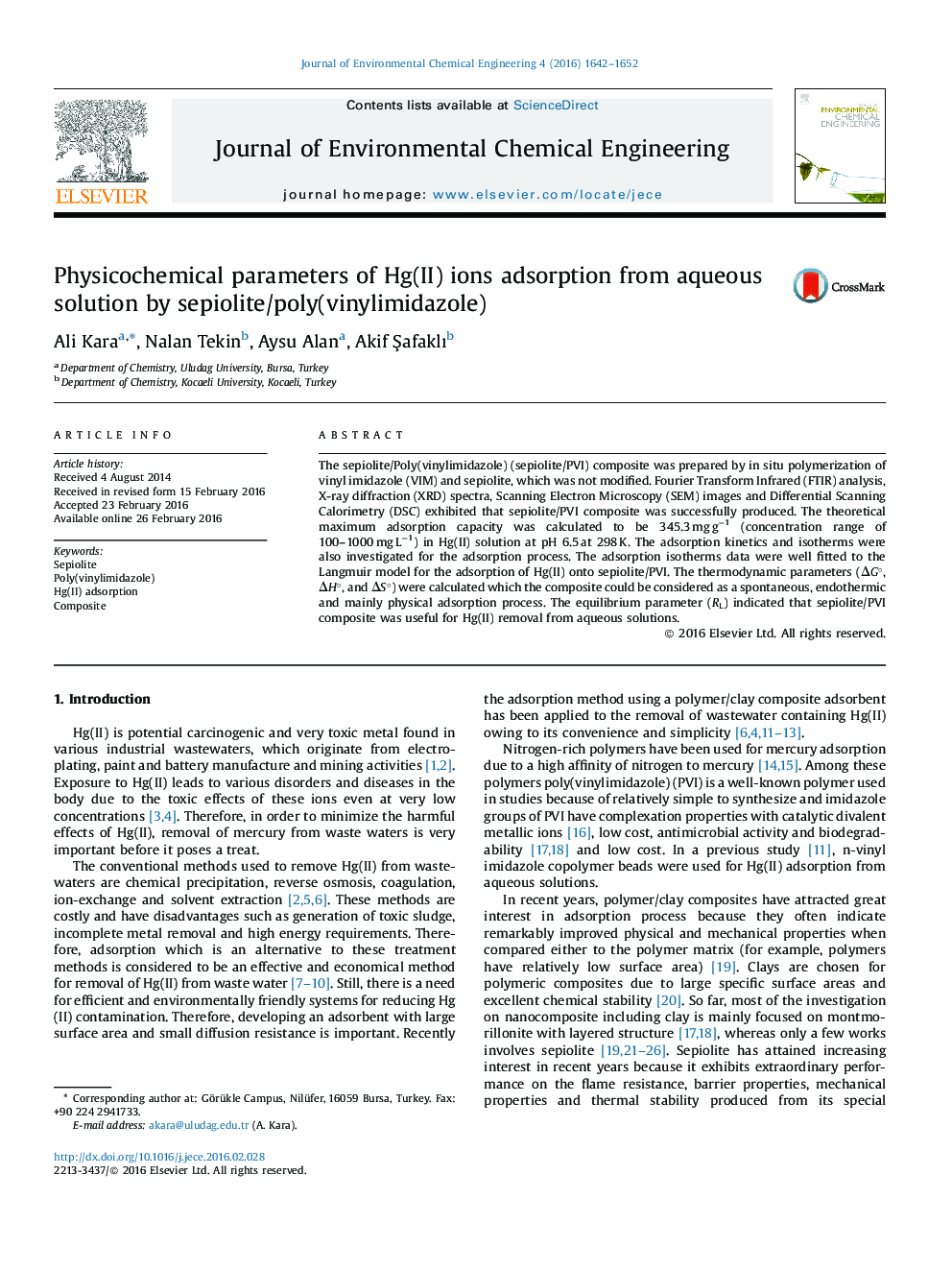| Article ID | Journal | Published Year | Pages | File Type |
|---|---|---|---|---|
| 221646 | Journal of Environmental Chemical Engineering | 2016 | 11 Pages |
•Sepiolite/PVI composite was prepared in situ polymerization.•Sepiolite/PVI composite was used for the removal of Hg(II).•The Hg(II) adsorption capacity of sepiolite/PVI composite was high.•Langmuir model is in good agreement with the experimental data.•The adsorption kinetics followed the pseudo-second-order equation.
The sepiolite/Poly(vinylimidazole) (sepiolite/PVI) composite was prepared by in situ polymerization of vinyl imidazole (VIM) and sepiolite, which was not modified. Fourier Transform Infrared (FTIR) analysis, X-ray diffraction (XRD) spectra, Scanning Electron Microscopy (SEM) images and Differential Scanning Calorimetry (DSC) exhibited that sepiolite/PVI composite was successfully produced. The theoretical maximum adsorption capacity was calculated to be 345.3 mg g−1 (concentration range of 100–1000 mg L−1) in Hg(II) solution at pH 6.5 at 298 K. The adsorption kinetics and isotherms were also investigated for the adsorption process. The adsorption isotherms data were well fitted to the Langmuir model for the adsorption of Hg(II) onto sepiolite/PVI. The thermodynamic parameters (ΔG°, ΔH°, and ΔS°) were calculated which the composite could be considered as a spontaneous, endothermic and mainly physical adsorption process. The equilibrium parameter (RL) indicated that sepiolite/PVI composite was useful for Hg(II) removal from aqueous solutions.
Graphical abstractFigure optionsDownload full-size imageDownload as PowerPoint slide
